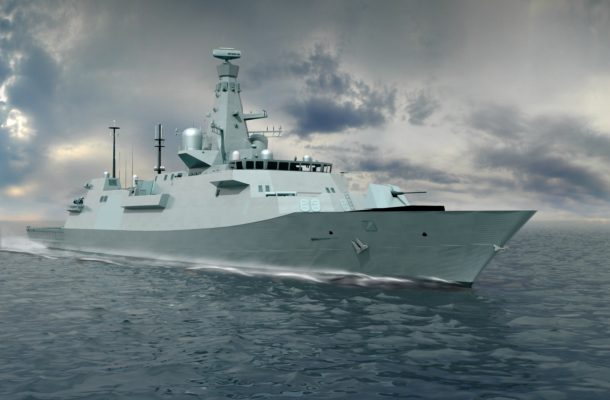2 Aussie firms win Royal Navy contracts

The Minister for Defence Industry, the Hon Christopher Pyne MP, has praised two Australian mid-sized companies for winning contracts to supply the Type 26 Global Combat Ships under construction in the United Kingdom. The contracts were won under the Defence Global Supply Chain program (GSC), managed by the Centre for Defence Industry Capability. The programme encourages export opportunities for Australian small-to-medium sized companies in the supply chains of prime defence contractors.
In a statement, the Minister said the contracts proved the Australian defence industry’s world-class capabilities and will support around 220 domestic jobs. He was “delighted” that Tasmanian-based Liferaft Systems Australia will provide the frigate’s Marine Evacuation System, while Victoria’s Mackay Consolidated Industries will supply pipe hanger inserts to the state of the art warships, built by BAE systems in two Scottish shipyards.
Mackay Consolidated Industries produces a diverse range of engineered rubber and bonded metal/rubber composite products for the automotive, defence, transport, construction and industrial markets while Liferaft Systems Australia designs and manufactures Marine Evacuation Systems and large capacity liferafts for ferries, high-speed passenger craft, cruise ships, military vessels and large private yachts around the world.
Minister Pyne expects that more Australian firms will benefit from Royal Navy contracts in the future. “Australian companies that demonstrate their ingenuity are valued by global prime companies in the United Kingdom and in other markets around the world,” he explained. “This highlights the global competitiveness of our Australian defence industry. Promoting Australia’s world class capabilities to our foreign defence partners and the international prime companies is a core element in the defence export strategy, which will be released later this year.”
The minister recently met Charles Woodburn, the Chief Executive Officer of BAE Systems, to discuss further opportunities for Australian firms to join the defence giant’s global supply chains. The minister noted that “BAE Systems Australia has one of the nation’s largest defence supply chains and a long and successful history of working closely with Australian suppliers, to open up both local and international opportunities.” GSC primes have awarded almost $1 billion of work to Australian firms over the past decade, most of them small-to-medium sized operations.
Britain’s Global Combat Ship will be offered for export as well as serve with the Royal Navy from 2021. Its modern modular design will allow it to undertake a full range of peacetime operations, including maritime security, counter piracy, counter terrorist and humanitarian and disaster relief operations, as well as wartime duties. The ships, which began construction in July this year at two Scottish shipyards after several revamps and delays, are designed to accept weapon and capability upgrades over the lifetime of the hull.
The 6,900 ton, 150 metre frigates will carry a core crew of 118, but can accommodate 208 people on board. They will undertake blue water missions of up to 2 months at sea within a range of 7,000 nautical miles. In addition to their formidable integral armaments, the frigates can deploy rigid-hulled inflatable boats and unmanned surface vehicles from the stern while a large Integrated Mission Bay and hangar amidship can accommodate 2 Merlin helicopters, with a flight deck large enough for a twin rotor Chinook.
The Royal Navy’s version, known as the Type 26 or City class frigate, will deploy the Type 997 Artisan 3D search radar and Sea Ceptor (CAMM) air-defence missiles launched from 48 vertical launching system (VLS) canisters. A 24-cell Mark 41 strike-length VLS forward of the bridge can fire Tomahawk cruise missiles, a future anti-ship missile and quad packed Sea Ceptor missiles. Like the Type 23 frigates it will replace, the Type 26 will have an acoustically quiet hull for anti-submarine warfare and carry a Ultra Electronics Type 2150 next generation bow sonar and a powerful Sonar 2087 towed array.
The Global Combat Ship offered for explort will also be fitted with guns of various calibres. Instead of the RN’s current 4.5 inch Mark 8 naval gun, the international Global Combat Ship will be equipped with a NATO-standard BAE 5 inch gun. Smaller guns can include two Phalanx CIWS, two 30mm DS30M Mark 2 Automated Small Calibre Guns and a number of miniguns and general-purpose automatic close support weapons. Plans for a smaller Type 31 frigate were also announced recently by the British government and Australia has already embarked on its own major shipbuilding programme.








